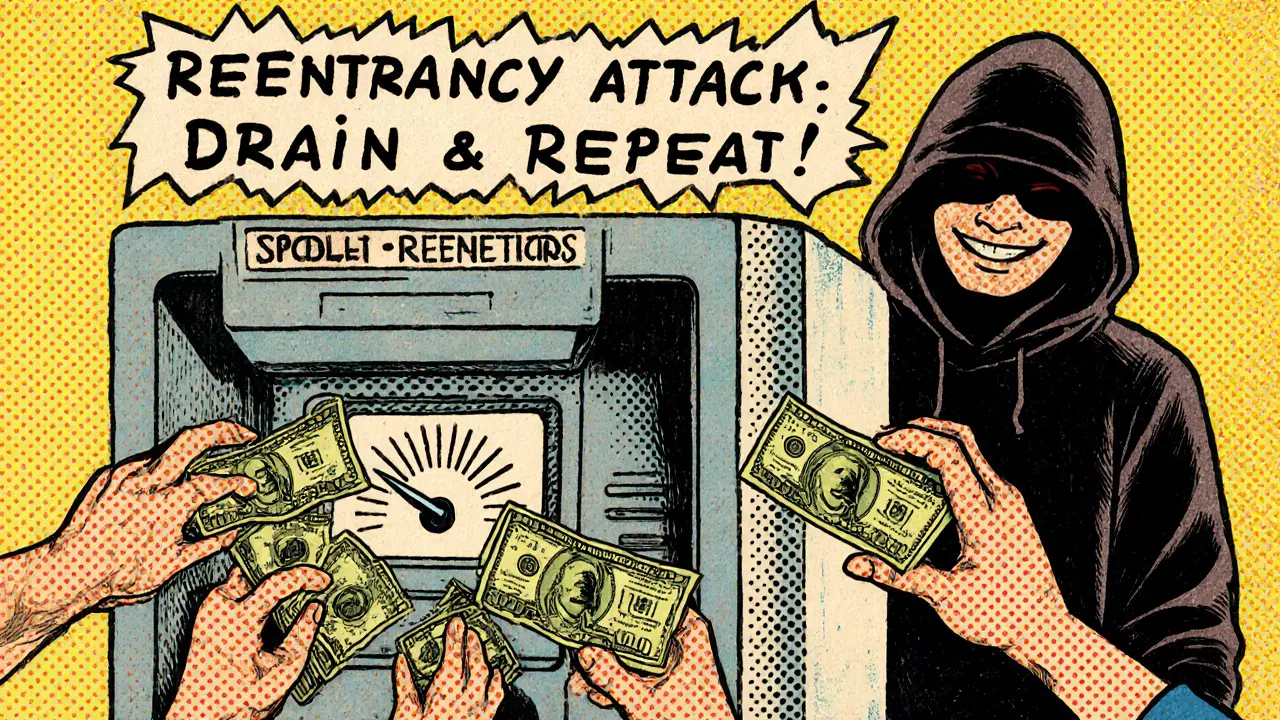Smart Contract Vulnerabilities: Understanding the Risks and Fixes
When working with smart contract vulnerabilities, flaws in self‑executing blockchain code that can be exploited to steal funds or disrupt services. Also known as contract bugs, they pose a serious threat to blockchain security and the broader DeFi ecosystem.
Understanding smart contract vulnerabilities is the first step toward protecting your assets. These weaknesses arise from three main sources: careless programming, misunderstood blockchain semantics, and inadequate testing. In practice, a vulnerable contract can let an attacker re‑enter a function, bypass access controls, or overflow numeric values. That’s why smart contract audits have become a standard defensive layer. Audit firms run static analysis, formal verification, and manual code review to spot issues before deployment. Tools like Slither, MythX, and Remix’s debugger automate many checks, but human expertise still catches logic errors that machines miss. The audit process itself strengthens Ethereum development practices, because most DeFi protocols live on that chain and inherit its security model.
Common Vulnerability Types You’ll See Across Projects
Smart contract vulnerabilities encompass coding errors, logic flaws, and permission misconfigurations. For example, the infamous re‑entrancy bug let an attacker drain thousands of dollars from a lending platform by calling back into the contract before the balance was updated. Another frequent issue is the integer overflow, where arithmetic exceeds the variable’s limit and wraps around, giving the attacker an unrealistic token balance. Access control mistakes—such as missing onlyOwner modifiers—can let anyone change critical parameters like interest rates or token minting rights. These patterns show why DeFi risks are tightly linked to smart contract quality; a single flaw can cascade into market-wide fallout, as we saw during the 2022 flash‑loan attacks.
Mitigation strategies start with secure coding guidelines: use well‑audited libraries (OpenZeppelin), write exhaustive unit tests, and adopt formal verification where feasible. After deployment, continuous monitoring via on‑chain analytics and bounty programs adds another safety net. Many projects now integrate runtime guards like OpenZeppelin Defender to pause contracts when anomalies appear. By pairing proactive audits with reactive monitoring, you create a layered defense that reduces the likelihood of a catastrophic breach. Below you’ll find a curated list of articles that dive deeper into each of these topics, from step‑by‑step audit walkthroughs to real‑world case studies of smart contract exploits.
Common Smart Contract Vulnerabilities and How They Cost Millions
by Johnathan DeCovic Oct 28 2025 22 CryptocurrencySmart contract vulnerabilities have cost over $1.1 billion since 2016. Learn the top risks-reentrancy, access control, oracle manipulation-and how to prevent them before your project gets hacked.
READ MORESmart Contract Audit: A Complete Security Guide for 2025
by Johnathan DeCovic Nov 8 2024 15 CryptocurrencyA comprehensive 2025 guide on smart contract auditing, covering processes, tools, partner selection, post‑deployment monitoring, and emerging security trends.
READ MORE

